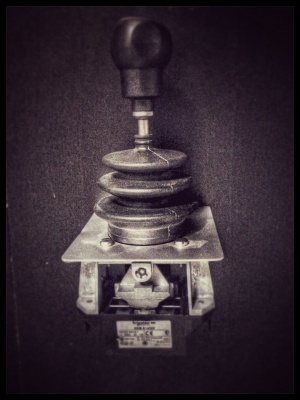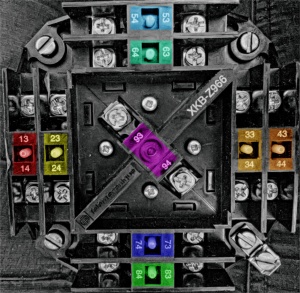Archive:WiFiJoystick: Difference between revisions
Jump to navigation
Jump to search
add github link |
No edit summary |
||
| Line 1: | Line 1: | ||
{{outdated|type=member project}} | |||
[[File:WiFiJoystick_joystick.jpg|left|thumb|one of the big and heavy joysticks]] | [[File:WiFiJoystick_joystick.jpg|left|thumb|one of the big and heavy joysticks]] | ||
{{project | {{project | ||
Revision as of 12:03, 10 September 2022
 You are visiting an old member project. The information found on "WiFiJoystick" might be out of date.
You are visiting an old member project. The information found on "WiFiJoystick" might be out of date.
| WiFiJoystick Release status: experimental [box doku] | |
|---|---|
| Description | WiFi connected Joystick and Gamepad |
| Author(s) | Jorgen |
This page shows a short description of how to create a WiFi enabled Gamepad / Joystick. The WiFiJoysticks can be used to play games on LED-Panels on events like makerfaires.
source code
joystick & buttons
pin mapping

| function | state 1 | state 2 | state 3 |
|---|---|---|---|
| Push Button | 
|
||
| left | 
|

|

|
| right | 
|

|

|
| up | 
|

|

|
| down | 
|

|

|
mqtt topics (receive)
| topic | payload | example |
|---|---|---|
| WiFiJoystick/<CHIP-ID>/config | flags to configure | reboot |
| WiFiJoystick/<CHIP-ID>/brightness | brightness from 0 to 255 | 190 |
| WiFiJoystick/<CHIP-ID>/debounce/push | debounce delay in ms | 200 |
| WiFiJoystick/<CHIP-ID>/debounce/button1 | debounce delay in ms | 200 |
| WiFiJoystick/<CHIP-ID>/debounce/button2 | debounce delay in ms | 200 |
| WiFiJoystick/<CHIP-ID>/debounce/left | state1,state2,state3 (debounce delay in ms) | 150,100,200 |
| WiFiJoystick/<CHIP-ID>/debounce/right | state1,state2,state3 (debounce delay in ms) | 150,100,200 |
| WiFiJoystick/<CHIP-ID>/debounce/up | state1,state2,state3 (debounce delay in ms) | 150,100,200 |
| WiFiJoystick/<CHIP-ID>/debounce/down | state1,state2,state3 (debounce delay in ms) | 150,100,200 |
mqtt messages (sending)
| topic | payload | example |
|---|---|---|
| WiFiJoystick/<CHIP-ID>/button/push | press or release | press |
| WiFiJoystick/<CHIP-ID>/button/button1 | press or release | press |
| WiFiJoystick/<CHIP-ID>/button/button2 | press or release | press |
| WiFiJoystick/<CHIP-ID>/button/left1 | press or release | press |
| WiFiJoystick/<CHIP-ID>/button/left2 | press or release | press |
| WiFiJoystick/<CHIP-ID>/button/left3 | press or release | press |
| WiFiJoystick/<CHIP-ID>/button/right1 | press or release | press |
| WiFiJoystick/<CHIP-ID>/button/right2 | press or release | press |
| WiFiJoystick/<CHIP-ID>/button/right3 | press or release | press |
| WiFiJoystick/<CHIP-ID>/button/up1 | press or release | press |
| WiFiJoystick/<CHIP-ID>/button/up2 | press or release | press |
| WiFiJoystick/<CHIP-ID>/button/up3 | press or release | press |
| WiFiJoystick/<CHIP-ID>/button/down1 | press or release | press |
| WiFiJoystick/<CHIP-ID>/button/down2 | press or release | press |
| WiFiJoystick/<CHIP-ID>/button/down3 | press or release | press |
status LEDs
mqtt topics (receive)
| topic | payload | example |
|---|---|---|
| WiFiJoystick/<CHIP-ID>/color/led1 | solid/once/flash/fade,red,green,blue(,interval,red2,green2,blue2) | solid,255,0,0 once,0,255,255,5000 |
| WiFiJoystick/<CHIP-ID>/color/led2 | solid/once/flash/fade,red,green,blue(,interval,red2,green2,blue2) | fade,255,0,0,2000,0,255,0 flash,0,0,255,500 flash,255,0,0,1000,255,255,0 |
I2C IO expander
The ESP8266 has too less IO pins - so we will use IO expander ICs with serial interface (I²C-Bus):
